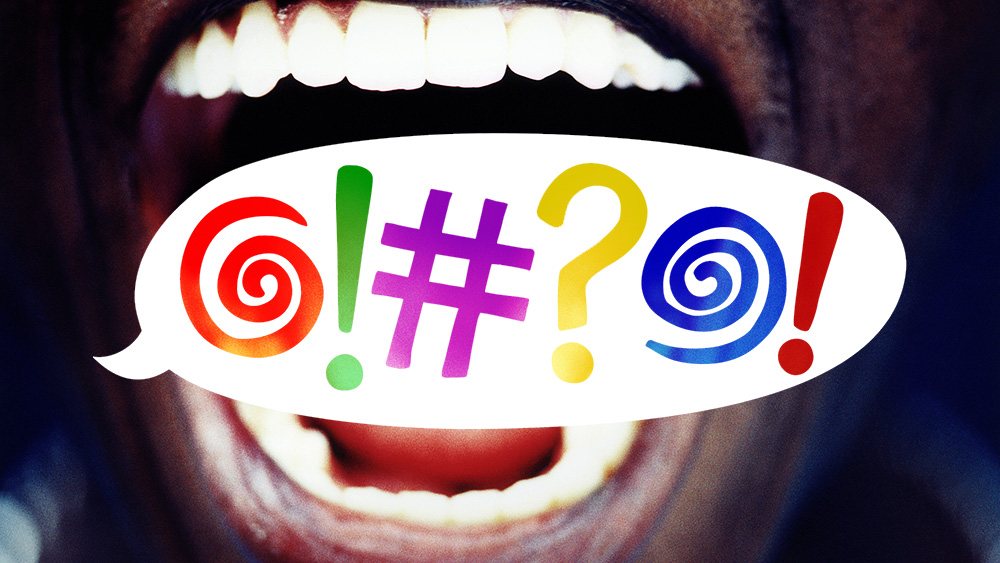Psychology
Psychology
[ follow ]
#cognitive-dissonance #perfectionism #attachment #child-development #identity #emotional-regulation #gift-giving
fromPsychology Today
1 day agoWhy Some People Sound Calm When They're Not
In many collectivistic cultures, emotion is not experienced as purely personal. It is relational. Collectivistic cultures emphasise interdependence, social harmony, and the primacy of group well-being over individual autonomy. People tend to define themselves through relationships, roles, and obligations, and regulate their emotions in ways that maintain cohesion and respect within the in-group. Emotional expression is often moderated to preserve dignity, avoid burdening others, and protect relational stability.
Psychology
fromPsychology Today
3 days agoFrom Helpless to Hopeful During The Job Search
It was obvious that highly-qualified job-seekers consistently submit sometimes hundreds of applications. They then wait. They hear nothing. Or they receive automated rejections sometimes many weeks or months later. What the job seekers describe is not just disappointment but something deeper, a growing sense that nothing they do matters anymore. Neuroscience has a name for this state of mind and emotion. It is not weakness nor lack of effort; it is learned hopelessness, which our brains are amazingly sensitive to.
Psychology
fromPsychology Today
2 days agoHow Father Absence Shapes Male Violence Worldwide
Camilo grew up surrounded by adults, yet without a stable father. His mother moved from one relationship to another, each new man arriving with promises of permanence and leaving with silence. By the time Camilo reached adolescence, he had called five different men "father," and none of them stayed. What formed inside him was not only grief, but confusion about what authority, protection, and masculinity were supposed to look like.
Psychology
fromPsychology Today
2 days agoMattering After Brain Injury
According to the author, Zach Mercurio, mattering is when another satisfies our fundamental need to be seen, heard, and valued. Mattering is when we feel significant to others. 'Mattering is different and more elemental than 'belonging' or 'inclusion.' Belonging is feeling welcomed and accepted into a group. Inclusion is being invited and able to take an active role in that group, but mattering is feeling significant to its members.'
Psychology
fromBig Think
4 days agoThe happiness shortcut that hides in plain sight
ROBERT WALDINGER: I started out as an intern in pediatrics and I would see one ear infection after another, and the kids were adorable, but one ear infection is pretty much the same as every other. Whereas when you talk to people about their lives, it's never the same. And I knew that that would keep me interested for my whole career, which it has.
Psychology
fromPsychology Today
5 days agoWhat Makes Sex Offender Registries Psychologically Effective
Sex offender registries have been adopted across many countries as responses to sexual violence, public fear, and the demand for accountability. Although often framed as legal or administrative tools, registries function more accurately as psychological systems of behavioral regulation. They shape identity, stress, emotional regulation, and social integration, all of which unfold within specific cultural contexts. A scientific evaluation, therefore, requires examining registries through forensic psychology rather than policy rhetoric alone.
Psychology
fromPsychology Today
5 days agoThe Affective Trade-Offs We Make
In my conception of the Affect Management Framework (AMF; Haynes-LaMotte, 2025), affect is defined as an evaluative common currency in consciousness that is attached to the brain's goals and can be swayed by a combination of interoceptive senses, meaning-making processes, the processing dynamics of exteroceptive senses (sight and hearing), and the proprioceptive signals used to control the body. My previous post provided an overview of the framework. This post will explore additional principles of the AMF.
Psychology
fromThe New Yorker
1 week agoIs Cognitive Dissonance Actually a Thing?
Leon Festinger, a young American psychologist at the University of Minnesota, read about these rumors in the early nineteen-fifties and was puzzled. Festinger didn't think people would voluntarily adopt anxiety-inducing ideas. Instead, he reasoned, the rumors could better be described as "anxiety justifying." Some had felt the earth shake and were overwhelmed with fear. When the outcome-they were spared-didn't match their emotions, they embraced predictions that affirmed their fright.
Psychology
fromFast Company
1 week agoScience says super-achievers don't set avoidance goals. Here's why successful people set approach goals
Partly that's because it's more satisfying to do something you want to do than to avoid something you don't want to do. For example, for decades I drank a ton of Diet Mountain Dew. When I finally decided I wanted to drink less soda, I set an approach goal: Instead of setting a goal like "Stop drinking Diet Mountain Dew in the morning," my goal was "Drink water with my protein bar and banana for breakfast.
Psychology
fromPsychology Today
1 week agoWhen to Prioritize Solitude-and When to Participate
It's not just the holiday season. We live with this tension every day. The pull toward solitude versus the longing to belong is not a simple dichotomy but something that requires constant reflection and recalibration. For me, it is one of the central challenges of being human. When I say "group," I mean more than casual socializing. I include much of our outer world: family, school, work, groups formed by hobbies or shared interests (bandmates, pickleball team, neighborhood boards, volunteer organization, and more).
Psychology
Psychology
fromwww.theguardian.com
1 week agoDistressing videos can have a lasting impact here's how to look after yourself in the wake of the Bondi attack | Ahona Guha
Viewing and sharing graphic footage of violent incidents causes significant psychological harm to victims' families and viewers and should be limited to reduce trauma.
Psychology
fromwww.theguardian.com
1 week agoHow parents should talk to their children about the horror of the Bondi shootings | Vanessa Cobham for The Conversation
Be honest, use age-appropriate explanations, correct misinformation, listen fully to children's concerns, and reassure them about safety and help after violent events.
Psychology
fromwww.theguardian.com
1 week agoI hate this TV series I'm binge-watching, yet I'm on track to complete all 177 episodes. Why am I doing it? | Imogen West-Knights
A person compulsively rewatched nearly all 177 episodes of House during a difficult period, unable to stop despite dwindling enjoyment and recognition of problematic binge-watching.
fromPsychology Today
1 week agoThe Psychological Impact of Space Travel
Anyone traveling to outer space should be aware of the risks. Currently, staying alive means staying cocooned inside the spacecraft, spacesuit, or settlement. While planetary-scale engineering or genetic engineering may yet happen, Earth-like environments that are habitable for humans are a long way from either. Scientists investigate psychological responses to long-term experiences of lack of natural light, spatial confinement, ambient noise, living and working with the same small group of people, and mental adjustments to the physical and cognitive changes induced by spaceflight.
Psychology
fromPsychology Today
1 week agoWhy Is No One Talking About the Aliens?
Over the past few years, there have been televised congressional hearings, repeated news segments across major networks, and a recent release of a mind blowing documentary called The Age of Disclosure that brings much of this information together, featuring on-the-record disclosures and sworn testimony from dozens of current and former high-level U.S. government, military, and intelligence officials describing secret classified government programs tasked with investigating unidentified anomalous phenomena (UAPs).
Psychology
fromFast Company
1 week agoThe December effect: How constraints create better leadership decisions
This isn't holiday spirit. It's design and a great lesson in influence. If leaders learned how to design decisions the way December does, they would get clarity, alignment, and speed all year, and not just when the calendar runs out. The idea is simple. When options shrink, focus increases. When criteria are explicit, choices become easier. When time is clear, commitment accelerates. The research backs this up.
Psychology
fromPsychology Today
1 week agoMotivation vs. Friction: Two Levers for Better Living
A better life means different things to different people. For one person, a better life might mean better relationships, better emotional well-being, or better physical health. For another, the same idea may instead conjure a desire for better finances or a better work-life balance. Despite these different visions, however, there is a unifying quality about a better life that most of us share: we all want one.
Psychology
fromeLearning Industry
1 week agoWhy Impostor Syndrome Disrupts Learning And Skill Growth And How We Can Beat It
How many times have you heard one of your peers talk about impostor syndrome? This topic, describing the persistent belief that one's achievements are undeserved, is frequently heard in films, TV, and even among your friends. But while it's natural to second-guess yourself sometimes, experiencing impostor thoughts can have disruptive effects on your long-term goals. Science says it can erode your engagement, learning outcomes, and professional growth efforts-not to mention your well-being.
Psychology
fromPsychology Today
1 week agoWhy We Stay Silent: The Costs of Leaving Things Left Unsaid
Our brain is constantly assessing risk and safety. Being judged, rejected, or demoted within a group can register as a threat to belonging, something that, for most of human history, meant a threat to survival. Thus, silence may merely be an intuitive default response while the brain assesses the safety of the social situation. When we sense danger, however subtle, say an unpredictable leader or a dismissive tone, the amygdala becomes alert, and the brain shifts into a state of heightened vigilance and self-protection mode.
Psychology
fromFast Company
1 week agoThree hacks to improve your odds of success
Imagine you've set the goal of running a marathon that's 90 days away. You've hired a trainer who says this a less than optimal amount of time, but if you stick religiously to her fitness routine, nutrition plan, and sleep schedule, you'll be ready come race day. Cheat in any of those three areas, she warns, and you won't be able to run 26.2 miles on three month's notice.
Psychology
fromFast Company
1 week agoThe most influential leaders say less and listen more. Here's why
A survey from People Insights found that only 56% of employees believe senior leaders genuinely make an effort to listen, which is down from 65% two years ago. We live in a world where algorithms reward noise. Visibility has become a proxy for value, and airtime is the metric that many use to measure leadership presence. But real influence doesn't come from speaking more. It actually comes from listening better. Influence grows through empathy, trust, and the ability to see and understand people.
Psychology
fromPsychology Today
1 week agoHow to Avoid Procrastinating When You Don't Want to Work
Whether it is putting off doing the laundry, paying your bills, or getting your shopping done, we all procrastinate. As students, the urge to procrastinate is even stronger when you're surrounded by opportunities to have fun. But procrastination has been found to lead to poorer academic performance, higher levels of stress and anxiety, and academic burnout. Lee, Othman, & Ramlee (2025) were interested in determining if there were other treatment modalities besides Cognitive Behavioral Therapy that might help avoid procrastination.
Psychology
fromPsychology Today
1 week agoWhat Are Your Body Beliefs?
These beliefs don't just shape how we see our own bodies; they also get projected onto other people's bodies. Without realizing it, many of us internalize cultural stories like "larger bodies are lazy," "thin people are more disciplined," or "some bodies are inherently better or more worthy than others." These narratives quietly dictate how we interpret health, morality, attractiveness, and even someone's character-all before we consciously notice what's happening.
Psychology
fromPsychology Today
1 week agoHarness the Potential of Self-Talk Strategies
Self-talk, the continuous internal dialogue we maintain, is an intrinsic aspect of being human that often occurs without our conscious awareness. This internal chatter can become so routine that we overlook it, or it may replay familiar messages repeatedly. By acknowledging that our self-talk is rooted in our shared history, we can better understand how our thoughts are shaped by the values and beliefs passed down through generations. This awareness empowers us to transform our self-talk, ultimately influencing our perspectives
Psychology
fromPsychology Today
1 week agoHow to Recognize and Reduce 'Empathic Personal Distress'
Beth's capacity for empathy serves her well with her husband, James, as well as in other relationships. Others experience her as a good listener and often seek her out to share their stress. However, these conversations often leave Beth feeling anxious and distraught, even though she may not recognize the source of her discomfort. At other times, she is able to recognize and admit that her tension is related to feeling overwhelmed by others' suffering.
Psychology
fromPsychology Today
1 week agoYou Don't Have to Worry About Giving Your Best Shot
Yesterday I drove my son to work and, since we arrived early, we sat in the car and chatted. I'm not sure how we got onto the topic, but quite quickly, we began discussing the idea that the things people do are always the best they can do given who they are, what they know, and the circumstances they find themselves in.
Psychology
Psychology
fromSlate Magazine
1 week agoExperts Say It's the Key to a Well-Adjusted Child. I Tried for Years. This Holiday Season, I Encourage You to Give Up.
Minimalist parenting does not guarantee children will resist consumerist impulses; older children often develop collecting and influencer-style behavior despite intentional toy curation.
[ Load more ]









